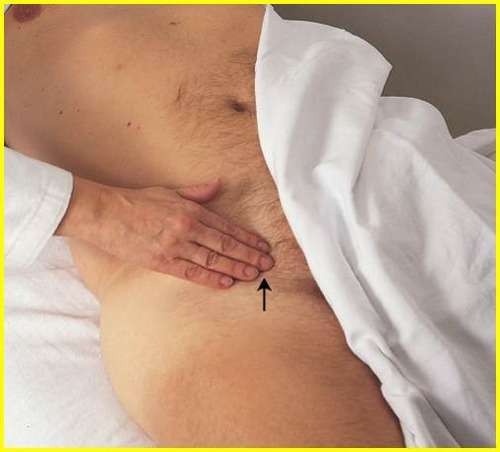A nurse is caring for an infant who has coarctation of the aorta.
Which of the following should the nurse identify as an expected finding?
Frequent nosebleeds.
Upper extremity hypotension.
Weak femoral pulses.
Increased intracranial pressure.
The Correct Answer is C

This is because coarctation of the aorta is a congenital condition where the aorta is narrow, usually in the area where the ductus arteriosus inserts. This causes a decrease in blood flow to the lower body, resulting in weak or absent pulses in the femoral arteries.
The other choices are incorrect for the following reasons:
Choice A is not a typical sign of coarctation of the aorta.
Nosebleeds can be caused by many factors, such as dry air, allergies, trauma, or bleeding disorders.
Choice B is also not a common finding in coarctation of the aorta. In fact, patients with this condition may have high blood pressure in the upper extremities due to the increased resistance of the narrowed aorta.
Choice D is not directly related to coarctation of the aorta.
Increased intracranial pressure can be caused by various conditions that affect the brain, such as head injury, stroke, infection, or tumor.
Normal ranges for blood pressure and pulse vary depending on age, sex, and health status. However, some general guidelines are:
- Blood pressure: less than 120/80 mmHg for adults; less than 95/65 mmHg for infants.
- Pulse: 60 to 100 beats per minute for adults; 100 to 160 beats per minute for infants.
Nursing Test Bank
Naxlex Comprehensive Predictor Exams
Related Questions
Correct Answer is D
Explanation
A client who is experiencing a panic attack has a very high level of anxiety and a diminished ability to focus. The nurse should stay with the client and remain calm and reassuring during the panic attack. This can help the client feel safe and supported, and reduce the intensity of the anxiety.
Choice A is wrong because atomoxetine is not an anti-anxiety medication, but a selective norepinephrine reuptake inhibitor (SNRI) used to treat attention deficit hyperactivity disorder (ADHD). It has no effect on reducing anxiety and can cause side effects such as insomnia, nausea, and increased blood pressure.
Choice B is wrong because encouraging the client to watch television is not a therapeutic intervention for a panic attack.
Watching television can increase the stimuli in the client’s environment, which can worsen anxiety.
The nurse should maintain an environment with low stimulation for the client experiencing a panic attack. Dim lighting, few people, and minimal distractions can assist the nurse to decrease the client’s level of anxiety.
Choice C is wrong because teaching the client how to meditate is not appropriate during a panic attack.
Meditation is a relaxation technique that can be helpful for preventing or reducing anxiety, but it requires concentration and focus, which are impaired in a panic attack. The nurse should teach the client how to meditate when the client is calm and receptive, not when the client is in crisis.
Correct Answer is A
Explanation
This is because infants with heart failure have difficulty feeding and may become exhausted or dyspneic during prolonged feedings. By limiting the feeding time, the nurse can reduce the energy expenditure and caloric needs of the infant.
Choice B is wrong because weighing the infant every other day is not enough to monitor the fluid status and nutritional intake of the infant. The nurse should weigh the infant daily at the same time using the same scale.
Choice C is wrong because placing the infant in a prone position can compromise respiratory function and increase the risk of sudden infant death syndrome (SIDS). The nurse should place the infant in a semi-Fowler’s position to facilitate breathing and decrease venous return.
Choice D is wrong because checking the infant’s oxygen saturation every 6 hr is not frequent enough to detect hypoxia or cyanosis. The nurse should monitor the oxygen saturation continuously or at least every 2 hr.
Whether you are a student looking to ace your exams or a practicing nurse seeking to enhance your expertise , our nursing education contents will empower you with the confidence and competence to make a difference in the lives of patients and become a respected leader in the healthcare field.
Visit Naxlex, invest in your future and unlock endless possibilities with our unparalleled nursing education contents today
Report Wrong Answer on the Current Question
Do you disagree with the answer? If yes, what is your expected answer? Explain.
Kindly be descriptive with the issue you are facing.
